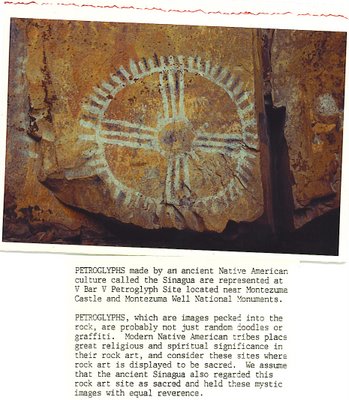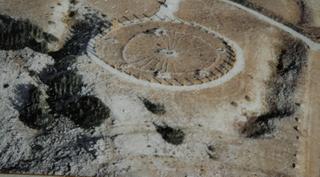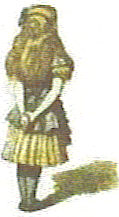"We all are of the citizens of the Sky" Camille Flammarion
In 1858, by the set of its relations, it will allow Camille Flammarion, the 16 years age, to enter as raises astronomer at the Observatory of Paris under the orders of Urbain the Glassmaker, at the office of calculations.
See:The Gravity Landscape and Lagrange Points

Now there is a reason that I am showing "this connection" so that the jokes that go around at the PI institute in regards to Tegmark( not that I am speaking for him and have absolutely no affiliation of any kind) and the "mathematical constructs are recognized" beyond just the jeering section, that while not being a party too, will and can be shown some light.
Three-body problem
For n ≥ 3 very little is known about the n-body problem. The case n = 3 was most studied, for many results can be generalised to larger n. The first attempts to understand the 3-body problem were quantitative, aiming at finding explicit solutions.
* In 1767 Euler found the collinear periodic orbits, in which three bodies of any masses move such that they oscillate along a rotation line.
* In 1772 Lagrange discovered some periodic solutions which lie at the vertices of a rotating equilateral triangle that shrinks and expands periodically. Those solutions led to the study of central configurations , for which \ddot q=kq for some constant k>0 .
The three-body problem is much more complicated; its solution can be chaotic. A major study of the Earth-Moon-Sun system was undertaken by Charles-Eugène Delaunay, who published two volumes on the topic, each of 900 pages in length, in 1860 and 1867. Among many other accomplishments, the work already hints at chaos, and clearly demonstrates the problem of so-called "small denominators" in perturbation theory.
The chaotic movement of 3 interacting particles
The chaotic movement of 3 interacting particles
The restricted three-body problem assumes that the mass of one of the bodies is negligible; the circular restricted three-body problem is the special case in which two of the bodies are in circular orbits (approximated by the Sun-Earth-Moon system and many others). For a discussion of the case where the negligible body is a satellite of the body of lesser mass, see Hill sphere; for binary systems, see Roche lobe; for another stable system, see Lagrangian point.
The restricted problem (both circular and elliptical) was worked on extensively by many famous mathematicians and physicists, notably Lagrange in the 18th century and Poincaré at the end of the 19th century. Poincaré's work on the restricted three-body problem was the foundation of deterministic chaos theory. In the circular problem, there exist five equilibrium points. Three are collinear with the masses (in the rotating frame) and are unstable. The remaining two are located on the third vertex of both equilateral triangles of which the two bodies are the first and second vertices. This may be easier to visualize if one considers the more massive body (e.g., Sun) to be "stationary" in space, and the less massive body (e.g., Jupiter) to orbit around it, with the equilibrium points maintaining the 60 degree-spacing ahead of and behind the less massive body in its orbit (although in reality neither of the bodies is truly stationary; they both orbit the center of mass of the whole system). For sufficiently small mass ratio of the primaries, these triangular equilibrium points are stable, such that (nearly) massless particles will orbit about these points as they orbit around the larger primary (Sun). The five equilibrium points of the circular problem are known as the Lagrange points.
So the thing is, that while one may not of found an anomalousness version of what is written into the pattern of WMAP( some Alien signal perhaps in a dimension of space that results in star manipulation), and what comes out, or how string theory plays this idea that some formulation exists in it's over calculated version of mathematical decor.
String Theory
In either case, gravity acting in the hidden dimensions affects other non-gravitational forces such as electromagnetism. In fact, Kaluza and Klein's early work demonstrated that general relativity with five large dimensions and one small dimension actually predicts the existence of electromagnetism. However, because of the nature of Calabi-Yau manifolds, no new forces appear from the small dimensions, but their shape has a profound effect on how the forces between the strings appear in our four dimensional universe. In principle, therefore, it is possible to deduce the nature of those extra dimensions by requiring consistency with the standard model, but this is not yet a practical possibility. It is also possible to extract information regarding the hidden dimensions by precision tests of gravity, but so far these have only put upper limitations on the size of such hidden dimensions.Bold was added by me for emphasis. See also:Angels and Demons on a Pinhead
This is/was to be part of the hopes of people in research for a long time. I have seen it before, in terms of orbitals(the analogical version of the event in the cosmos) and how such events could gave been portrayed in those same locations in space. Contribute, to the larger and global distinction of what the universe is actually doing. If it's speeding up, what exactly does this mean, and what should we be looking for from what is being contributed to the "global perspective" of WMAP from these locations??
But lets move on here okay.
If you understand the "three body problem" and being on my own, and seeing things other then what people reveal in the reports that they write, how it is possible for a lone researcher like me to come up with the same ideas about the universe having some kind of geometrical inclination?
You would have to know that "such accidents while in privy to data before us all", and what is written into the calculations by hand would reveal? Well, I never did have that information. What I did know is what Sean Carroll presented of the Lopsided Universe for consideration. This coincided nicely with my work to comprehend Poincaré in a historical sense. The relationship with Klein.
As mentioned before, at the time, I was doing my own reading on Poincaré and of course I had followed the work of Tegmark and John Baez's expose' on what the shape of the universe shall look like. This is recorded throughout my bloggery here for the checking.
What I want to say.
Given the mathematics with which one sees the universe and however this mathematical constructs reveals of nature, nature always existed. What was shown is that the discovery of the mathematics made it possible to understand something beautiful about nature. So in a sense the mathematics was always there, we just did not recognize it.:)













